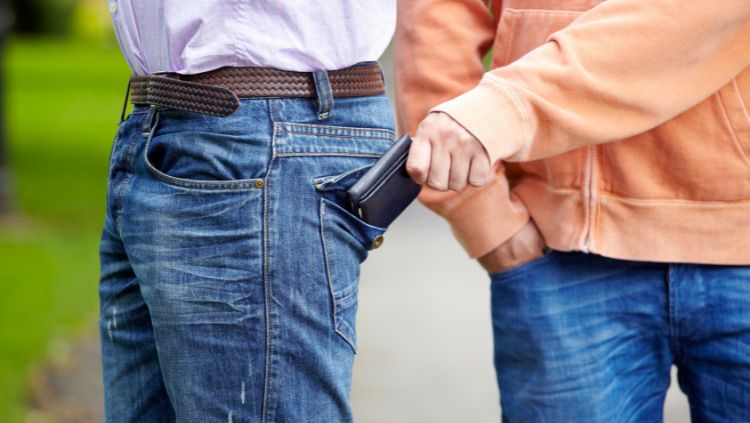In all my travels, I have encountered remarkably few problems. I believe it’s mostly because I think in terms of prevention. With experience, I naturally plan and travel in ways that protect my safety. For those who don’t have the experience and for those who might find a few surprises in this list, below are over 50 solo travel safety tips.
My goal with these tips are to help you:
- prevent problems from arising
- be aware when they could or do arise
- decide how to manage them if they arise
When it comes to travel safety, prevention comes first. True, no amount of prevention guarantees safety. Things happen! Still, prevention is an important start and a significant aspect of these 50 solo travel safety tips.
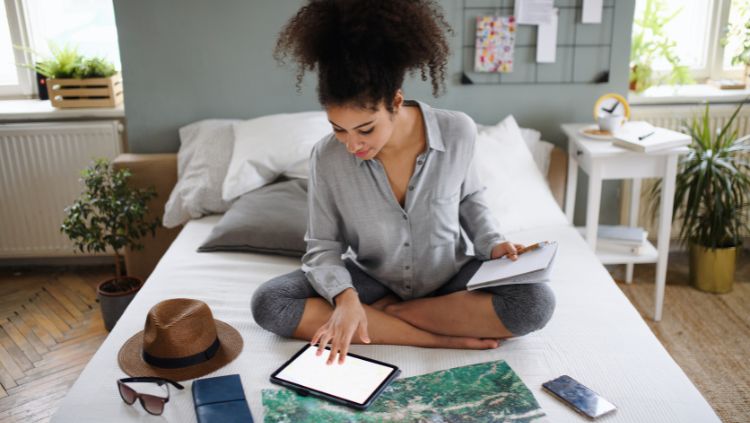
Solo Travel Safety Starts with the Right Plan
- Safety begins before you leave. Research is important. Knowledge protects you from the danger of misinformation, unsavory individuals, and/or naively wandering into an unsafe area. Imagine how you can be taken advantage of if you don’t understand the currency. Or the health problems you could face if you don’t know the necessary vaccinations for your destination. Or the potential loss of money, documents, and more if you don’t know the unsafe areas at your destination. Understanding your destination before you go is key to your safety when you’re there.
- Know your strengths and weaknesses. If you are new to travel, you likely have a lot to learn. If you’ve traveled a lot but have never traveled solo, you have different issues to resolve. We have a lot of content on the site for those embarking on their first solo trips. Read Travel Solo for the First Time: Complete Guide for Newbies.
- Choose your destination carefully. We all have different ideas of safety. Some would never consider certain destinations for safety reasons while others would. Make sure the safety level of your destination meets your personal travel safety needs. Read Where to Go? Great Destinations for First-Time Solo Travelers and check our Destinations section, which features posts written by solo travelers who’ve been there. Of course, use guide books as well.
- Check your government’s travel site. Your government likely has information on the travel documents you require for travel as well as any warnings for your destination. Here are links for travel alerts for the United Kingdom, United States, and Canada.
- Register with your government. I certainly don’t do this every time I travel but if you’re going for a few weeks, registering as a citizen traveling abroad is a good idea. Use the links above.
- Buy travel insurance before you go. I have World Nomads insurance. They are the only company I know that lets you buy insurance after you leave your country. However, it’s certainly not after you need to make a claim. It keeps life simple and safe to buy insurance before you go. Read Travel Insurance for Solo Travelers: How to Make Sure You’re Protected or Best Travel Insurance for Seniors: How to Find What’s Right for You.
- Schedule your arrival during daylight. The first stop for most travelers in a new destination is their hotel or hostel. I suggest that you arrive in the mid-afternoon so that you can really see what kind of area you’re staying in. A safe area will always look better in daylight. An unsafe area is more obviously so in daylight. But there are more very practical reasons to arrive during daylight. You will be able to find your accommodation more easily and if you don’t like it, you will have time to make other arrangements.
- Know how you will get to your first accommodation. Your arrival in any new country, especially one where you don’t know the language or the local transit system, is important. Research how you’ll get from the airport to your hotel or hostel (I use Rome2Rio) and give yourself lots of time. You will need it as you learn how their transit system works. If your flight arrives late in the day, you may want to avoid the transit system and splurge on a taxi to be on the safe side.
- Study a map before you leave. I’m one who loves maps so this is an obvious step for me. But even those who do not love maps are advised to look at one and get the lay of the land. For example, if you were to look at a map of Toronto you’d note that the lake is south no matter where you are in the city and the CN Tower stands high near the lake. If you get turned around look for the tower. If you can’t see it, ask someone which way the lake is. Not everyone knows north and south but locals know where the lake is. The same logic can be applied in New York City and many other cities based on major landmarks.
- Develop your navigation skills. Before leaving home you can wander into a different town or part of town and practice your navigation skills. Read How to Navigate a New City Solo: Travel Safety Skills.
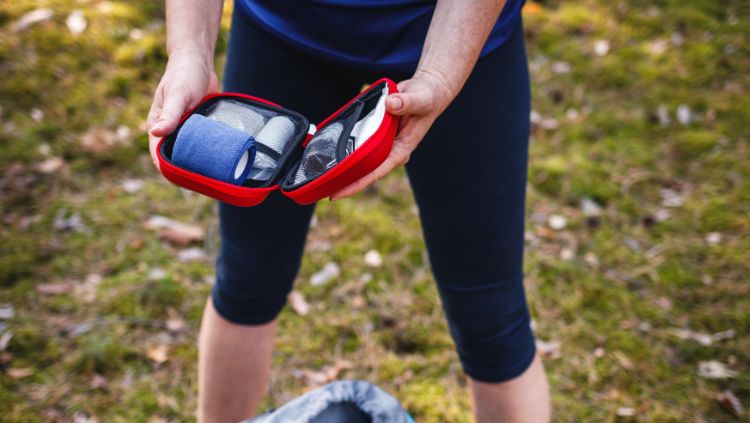
Travel Gear to Pack
I’m not really a “prepare for the worst and hope for the best” kind of person, even when it comes to solo travel safety. That said, when I buy products for travel, I try to buy ones that will increase my personal safety and the security of my things. Necessary, they have rarely been. But it’s great to know that they are there.
- An extra place to stash cash. This silk bra stash is a handy way of hiding a bit of extra cash. Available on Amazon. You can also consider a money belt or a neck stash.
- Pickpocket-proof clothing. Pants and jackets with extra, hidden pockets offer additional places to keep cash. Here’s a link to Amazon’s many pickpocket-proof items.
- Anti theft day pack. The Loctote AntiTheft Sack is a safe and it’s a backpack. Take it with you or leave it in your room locked to an immovable object with your valuables inside and everything will be safe. It’s also great for the beach.
- Water purifier. Stay healthy and save plastic water bottles with the Grayl Ultralight Water Purifier.
- First aid kit including:
- hand sanitizer in travel-sized bottles
- face masks
- Basic Band-Aids. They’re essential.
- NEOSPORIN® NEO TO GO!® First Aid Antiseptic/Pain Relieving Spray is a compact antibiotic spray. It’s perfect for travel.
- Dr. Frederick’s blister plasters
- acetaminophen
- BENADRYL® Itch Relief Spray for insect bites. I used to use calamine lotion but it makes such a mess and stains everything. This spray is far easier to use and just as, if not more, effective.
- DEET-free Insect Repellent from Repel.
- Instant Cold Packs
- Any medications recommended by my travel clinic
- The right wallet. Identity theft is a real thing. RFID skimming is where, with the right technology, a person near you can gather data from your credit cards without your knowledge. There’s little evidence that it constitutes a huge threat but there’s no harm erring on the side of safety. RFID-blocking products are available in the form of hard-shell card holders and leather wallets. Here’s some more information about RFID-blocking from NordVPN.
- A doorstop. Small and light, these can be very handy in smaller hotels off the beaten track where card keys and deadbolts are not common. Simply squeeze the doorstop under your door for greater solo travel safety.
- Whistle. A whistle attached to your day bag can be handy if you feel the need to draw attention to yourself and scare away any unwanted attention.
- A VPN on all your devices. A VPN is mentioned below in the tech section but it can’t be emphasized enough. Read: Best VPN for Travel: What, Why, How and New Recommendations.
How to Keep Your Money and Documents Safe as You Travel
- Protect yourself from pickpockets. Pickpockets target travelers. Fortunately, there are things you can do to prevent them from pickpocketing you. Get all the details by reading How to Avoid Pickpockets and Protect Your Valuables.
- Use credit and debit cards wisely. How you manage your money as you travel is very important. For example, to save money, walk past those money exchange kiosks at airports and use an ATM in the city.
- Don’t carry more than you need. If you have a card that does not charge you for taking funds from international ATMs, it’s best to take out small amounts frequently rather than carrying large amounts of cash. The exceptions are when ATMs are hard to find or you will need more money than normal for a particular reason.
- Get a credit card that doesn’t charge foreign transaction fees. The Chase credit cards are known for being good for this in the US.
- Carry a spare credit card. Not every card works everywhere. Carry a spare for such a situation or in case you lose your card.
- Keep emergency cash hidden. You can carry it on your body and have some tucked away in your suitcase or backpack.
- Don’t take unnecessary documents with you. For travel, you likely need your passport, driver’s license, visa (if the country you’re visiting requires one), travel insurance, and possibly proof of vaccination. You don’t need your social insurance card, checkbook, and the like. Leave the latter documents at home.
- Have multiple copies of your documents. I carry my original documents with me as I travel. I like the security of knowing where they are at any given moment. I have scanned copies in my Lastpass vault. You can do the same with Nordpass. I also have photocopies of my documents in my suitcase or backpack which is, on a typical travel day, in the hotel or hostel. Finally, I leave copies of these documents with my husband at home. Read about using Lastpass and Nordpass for documents here.
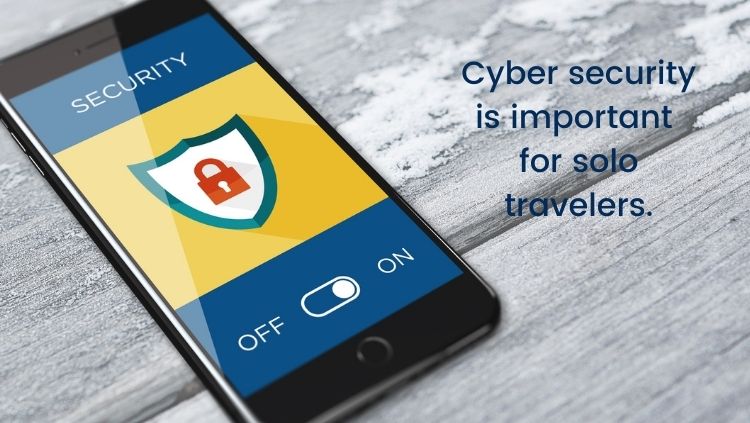
Technology for Travel Safety
- Understand the risks. We interviewed two cybersecurity experts. Read what they had to say about how solo travelers can protect themselves and their data while they’re on the road and what to do should problems arise.
- Use a VPN. Before you use a credit card online or check your bank balance or, basically, go into any website that requires a password, make sure you turn on a VPN. It’s almost impossible to travel and not use public Wi-Fi whether it’s in the hotel or a café. Here are our recommendations.
- Pre-program numbers into your phone, like your accommodation phone number, your government’s consulate office, and 911 if you are in North America.
- Make use of digital safety tools. There are hundreds of safety apps and tools on the market. From basic apps that come pre-installed on phones to a few specially designed for travel safety, we share our recommendations in 10 Solo Travel Safety Apps: Technology for Peace of Mind.
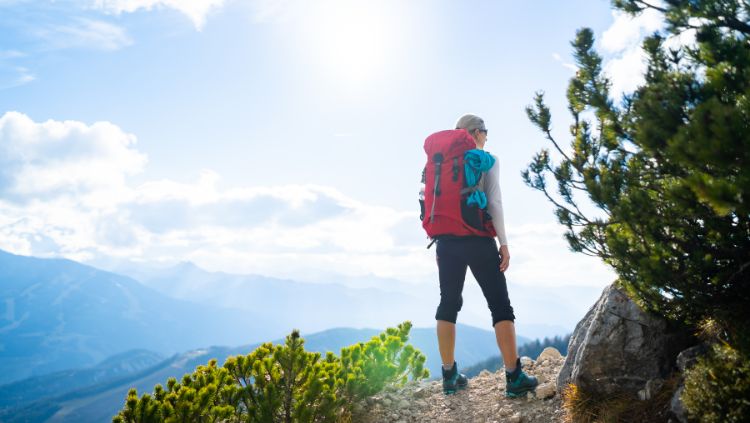
Solo Travel Safety Tips for While You’re On the Road
Remember all those rules your mother taught you to ensure that you stayed safe as a child? They also make great solo travel safety tips. Apply them rigorously when you’re traveling.
- Trust your instincts. If it doesn’t feel right, leave. Whether it’s a bar or a park or a hostel, if you don’t feel good in the situation, if your spidey senses are tingling, it’s best to get out of there.
- Know the typical con games of your destination. If someone wants to give you something for free it may be a good idea to decline. A rose is often offered on the streets of Barcelona to draw travelers in for a con. A ring apparently found on the ground and offered to you as the person who possibly lost it, is another ruse to turn away from. Familiarize yourself with the common con games travelers encounter. Here’s a list of 40 tourist scams.
- Stay in public. I learned this lesson the hard way. I was caught in a con game and, fortunately, I did not leave a public place. Had I done so my life would likely have been much different.
- Where you’re staying is personal information. Don’t tell strangers where you’re staying either in words or actions. Your accommodation should be your safe haven.
- Going out at night? Read this post on Night Safety for Solo Travelers: How to Have Fun and Be Safe.
- Stay alert. Sleep well. Stay sober. While it’s wonderful to sink into a destination, luxuriating in its culture, it’s also important to stay safe. Being well rested and sober is key to being alert and exercising good judgment, both of which are key to your safety. If you are not one, the other, or both, recognize that fact and be extra careful.
- Walk with confidence. In tourist areas such as around the Eiffel Tower, meandering as a tourist makes sense. However, there are other circumstances where you want to walk like a local, as if you know exactly what you’re doing and where you’re going. You don’t want to look like a tourist. That requires that you walk with confidence. Read Solo Travel Confidence: How to Be Strong, Capable, and Safe
- Blend in as well as possible. Blending in requires more than just walking with confidence. Be aware of cultural differences and blend in if possible. Read 12 Ways to Blend In When You Travel Alone.
- Be polite. Be impolite. Being impolite can definitely get you into trouble. If people take offence at your behavior it’s hard to know what can happen. So, definitely be polite under most circumstances. But if a person is bothering you, being polite can get you into trouble too. For solo travel safety, know when and how to make a lot of noise and attract attention to yourself and the person bothering you.
- Pack right. You’re more mobile and have less to lose when you pack light. Read: Carry-on Packing List: This Is How to Pack Light. Use a distinctive mark on your luggage other than a name and address tag. Keep your luggage tags with your flight ticket. It’s important to be able to confirm that the luggage is indeed yours. You may also want to keep your name and address inside your bag for proper identification if needed.
- Don’t flash wealth. Leave expensive things at home. Don’t wear jewelry or flashy clothes and accessories that will attract attention. Even if they don’t go after your jewelry, they may target you and pick your pocket.
- Keep your belongings close. Hold your wallet, camera, and phone close to you. Never keep your wallet in your back pocket. Keep the number of things you’re most concerned about to a minimum. For me, it’s my wallet, phone, and passport. Having just three things makes them easy to carry and keep track of.
- Take special care of your documents. I keep my passport on me. I keep my plane ticket on my phone plus paper copies in my bag. I keep extra money in a couple of places and an extra credit card separate from the one I regularly use.
- Carry the business card of your hotel or hostel. Getting back to your hotel or hostel is pretty important but it can be a challenge if you’re in a country where you don’t speak the language. When you check in, get a business card from the establishment and carry it with you.
- Don’t automatically jump in to help. If you see someone suddenly in need of help, get someone else to go to their aid with you. A local is better able to help and having someone else involved will protect you should the incident be a con game.
- Always carry a map. While walking around with a map in your hands may make you look like a vulnerable tourist, having one on you can be very helpful. If you’re lost, stop into a shop to look at it and get assistance. They are especially helpful when you don’t know the language. You can point to your destination, making communication easier.
- Understand the city transit system. Riding public transit is a great way to get to know a city and its culture. But, before you go, know how safe it is, how much the fares are and how they are paid, whether a pass is a good idea, and the basic routes you’ll be taking.
- Take a break once in a while. This goes along with staying aware of your surroundings. If you’re experiencing travelers fatigue, join a day tour or cooking class or something that will make for a simple, interesting, and relaxing day.
- Stay safe at your lodging. You want to be sure that you feel safe and secure where you lay your hat. Here are quick and simple solo travel safety tips for hotels.
- Ask for a room on an upper floor.
- If you are a woman, ask if there is a women-only floor or dorm.
- Be aware of the alternative exits.
- Before you go out, ask about safety.
- When you return at night, ask for an escort to your room if you are nervous.
- Use the security lock.
- Lock important items in the room safe.
- When you leave your room, leave the TV and a light on, if possible. Put out the “do not disturb” sign to suggest that there is someone in the room.
- Check the hotel or hostel reviews on a site like Booking.com for what people say about safety.
You may also want to read:
Last updated: 23rd August, 2024
